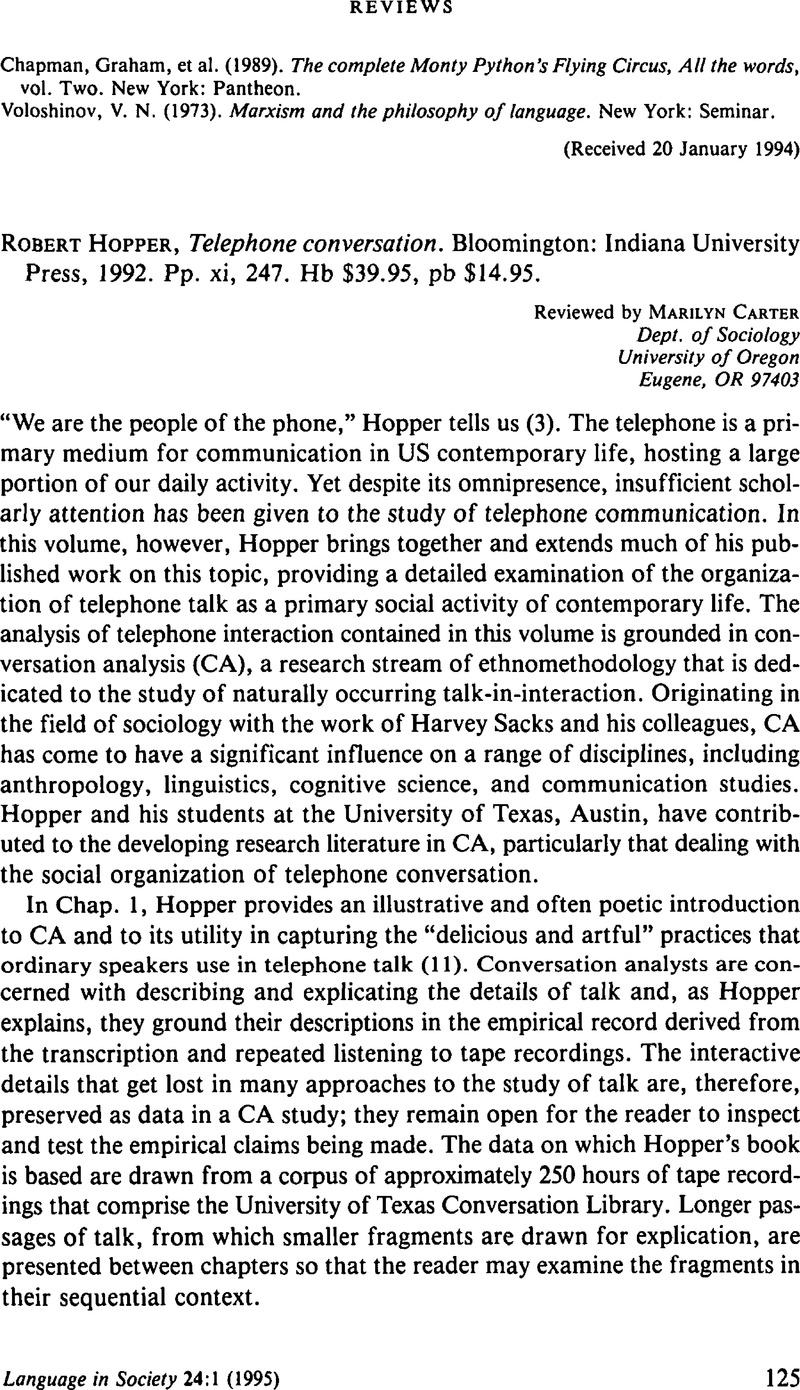No CrossRef data available.
Article contents
Robert Hopper, Telephone conversation. Bloomington: Indiana University Press, 1992 Pp. xi, 247. Hb $39.95, pb $14.95.
Published online by Cambridge University Press: 19 February 2009
Abstract
An abstract is not available for this content so a preview has been provided. Please use the Get access link above for information on how to access this content.

- Type
- Reviews
- Information
- Copyright
- Copyright © Cambridge University Press 1995
References
REFERENCES
Frankel, Richard (1989). “I wz wondering – uhm could Raid uhm effect the brain permanently d'y know?”: Some observations on the intersection of speaking and writing in calls to a poison control center. Western Journal of Speech Communication 53:195–226.CrossRefGoogle Scholar
Sacks, Harvey; Schegloff, Emanuel; & Jefferson, Gail (1974). A simplest systematics for the organization of conversation. Language 50:696–735.CrossRefGoogle Scholar
Schegloff, Emanuel (1986). The routine as achievement. Human Studies 9:111–52.CrossRefGoogle Scholar
Whalen, Marilyn, & Zimmerman, Don (1987). Sequential and institutional contexts in calls for help. Social Psychology Quarterly 50:172–85.Google Scholar




